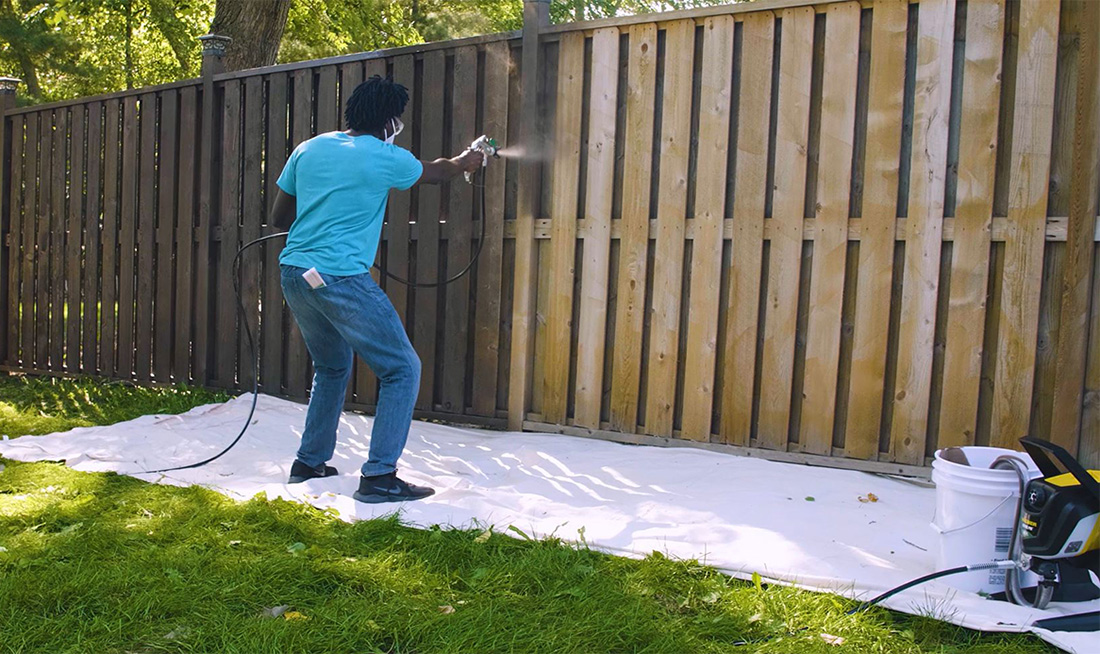Crucial Tips for Deck Discoloration Success
Achieving a faultlessly stained deck requires greater than just a brush and a canister of tarnish. The secret to a successful deck discoloration project depends on the careful attention to information and adherence to necessary actions. From selecting the ideal sort of discolor to mastering the art of application, each stage plays a vital duty in the final result. Whether you are a skilled DIY fanatic or starting your first deck discoloration journey, recognizing the nuances of the process can make all the difference in the durability and aesthetic charm of your exterior room.
Selecting the Right Stain
Selecting the proper tarnish is paramount in accomplishing a sturdy and visually pleasing coating for your deck. deck cleaning near me. When picking a discolor for your deck, it is vital to think about aspects such as the timber kind, wanted shade, level of protection needed, and upkeep preferences
To start with, consider the type of wood your deck is constructed from, as various wood varieties might react differently to specific kinds of stains. Hardwoods like oak or mahogany may call for various spots compared to softwoods like yearn or cedar. Comprehending the qualities of the wood will certainly assist you select a stain that permeates successfully and enhances its all-natural appeal.
Next, consider the color you desire for your deck. Discolorations can be found in a variety of hues, from all-natural tones that improve the timber's grain to more nontransparent colors that give much better UV protection. Pick a shade that matches your outdoor space and matches your aesthetic choices.
Furthermore, examine the level of security the stain deals. Some spots give much more comprehensive defense against UV rays, moisture, and mildew, which can lengthen the life of your deck. Stabilizing security with visual appeals is essential to accomplishing a lasting and visually enticing surface.
Preparing the Deck Surface
To make certain a successful application of the selected tarnish, extensive prep work of the deck surface is crucial. Start by cleaning up the deck extensively to remove dirt, debris, and any previous coatings. Use a deck cleaner or timber brightener together with a stiff-bristled brush to scrub the surface tidy. Pay attention to locations prone to mold and mildew growth. After cleaning, allow the deck to dry completely prior to continuing.
Replace or fix these as needed to guarantee the architectural honesty of the deck. This step not only aids the discolor stick far better however likewise improves the overall look of the deck.
Using the Stain Correctly

Begin by completely mixing the discolor to ensure an even consistency. Use a paint stirrer to blend the tarnish well, especially if it has fence pro been sitting for a while. When applying the discolor, utilize a sprayer, paintbrush, or roller , depending on the type of stain and the size of the deck. Operate in convenient areas to avoid the discolor from drying erratically. Use the stain in the direction of the wood grain to guarantee even protection and a professional surface.
If a second coat is required,Enable the initial coat to completely dry completely before determining. Comply with the maker's instructions concerning drying out times and reapplication. Proper application of the tarnish is necessary for protecting your deck and improving its look for several years ahead.
Maintaining Your Discolored Deck
After successfully using the tarnish to your deck, maintaining its appearance and protective high qualities is crucial for long-lasting durability and aesthetic charm. Normal maintenance is crucial to maintaining the beauty and stability of your discolored deck. Attending to issues without delay can stop them from aggravating and expand the life of your tarnished deck.

Troubleshooting Common Issues
Identifying and attending to common problems that might arise with your discolored deck is vital for guaranteeing its long life and optimal efficiency. One usual issue is flaking or peeling of the discolor.
An additional concern often encountered is mold and mildew and mold growth on the deck surface. This can be connected to moisture retention, lack of sunlight, or incorrect air flow. To tackle this trouble, a complete cleansing with a mold and mildew eliminator followed by appropriate drying out and application of a mold-resistant stain click for info is vital.
Additionally, fading of the stain shade over time is a common worry. UV direct exposure and severe climate can cause staining. To address this, choosing a top quality, UV-resistant tarnish and using a fresh coat occasionally can aid maintain the deck's visual appeal.

Final Thought
Finally, successful deck staining requires picking the right tarnish, properly preparing the deck surface, applying the stain properly, and maintaining the tarnished deck. By adhering to these necessary suggestions, you can attain a perfectly tarnished deck that improves the overall appearance of your outdoor area. Remember to repair any type of common problems that might develop during the discoloration process to guarantee a aesthetically appealing and durable result.
Attaining a perfectly tarnished deck needs more than simply a brush and a container visit this website of tarnish.To guarantee a successful application of the picked stain, thorough prep work of the deck surface area is vital. When applying the discolor, use a sprayer, roller, or paintbrush, depending on the kind of stain and the size of the deck.Recognizing and dealing with typical concerns that may develop with your tarnished deck is important for ensuring its long life and optimum performance.In conclusion, successful deck discoloration calls for choosing the appropriate tarnish, appropriately preparing the deck surface area, applying the stain properly, and keeping the stained deck.